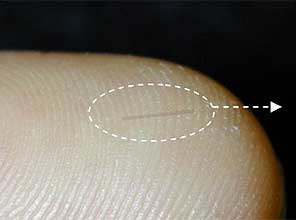Among the most sensitive parts of the body, including the hands, tongue, lips, and feet, the sense of touch in the hands stands out as the most acute.
 |
| Sensory receptors are relatively abundant in the fingertips (Image: nsf.gov) |
Humans use their hands to perceive the shape, temperature, and glossiness of objects, thanks to the sensory receptors located in the fingertips that allow us to interact with the external environment. This function of the hands is crucial for daily life. But why are the sensory receptors in the fingertips so sensitive?
This sensitivity is due to the abundance of nerve endings in our skin, which transmit sensory signals of heat, cold, pain, and more to the brain, where it processes and interprets these signals. On every cm2 of skin, there are approximately 12 heat receptors, over 100 cold receptors, and 25 tactile receptors. The sensory receptors in the fingertips are relatively abundant, making them the most developed for tactile functions.
With special training, sensitivity in the fingertips can be enhanced significantly compared to the average person. For instance, blind individuals can read Braille fluently, with this tactile reading achieved entirely through the fingertips’ contact with raised characters embossed on paper.




















































